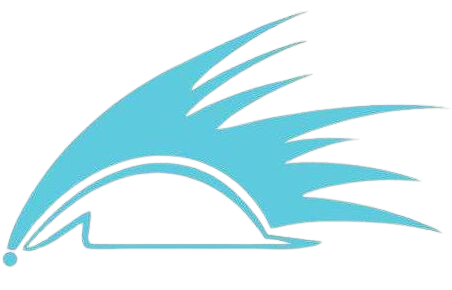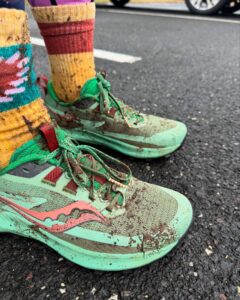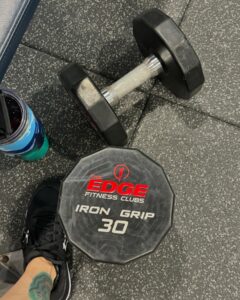In the winter I wrote a blog about exercising in the cold, a now it is the middle of summer so let us talk exercising in the heat. Many of us have been dealing with some hot temperatures for a while others are starting to.
Performance in the heat. When we exercise in the heat our hypothalamus acts as our body’s thermostat and will send signals to ensure we dissipate that heat so we do not increase our core temperature to dangerously high levels. Blood (usually warmer than air temp) is sent to the skin to for heat to be transferred to the environment. When exercising in the heat the cardiovascular system is working harder to ensure blood is delivered to both the working muscles and the skin. This results in a higher heart rate than working at the same effort in a cool environment.
If air temperature exceeds skin temperature, we begin to gain heat from the environment. In hot and dry environments, we rely on the evaporation of sweat to cool us down. Sweating is our primary means of heat dissipation during exercise (80%!). For sweat to be used for cooling it has to be evaporated, sweat that stays on clothing, drips off or can’t evaporate because of high humidity does not cool us down. This is why it is important to wear loose, wicking clothing while exercising. When humidity is high, it leads to decreases in athletic performance since we are putting out sweat that is not used for cooling, losing body water in the process, increasing our risk for dehydration. Being just 2% dehydrated will result in decreased performance. This is the point where we begin to see both heart rate and core temperature increase.
Acclimation. The good news is that we can acclimate to heat. When we acclimate changes to plasma volume (the water component of our blood), cardiovascular function, skin blood flow and sweat all occur to result in a lower core temperature and heart rate response to the exercise session. It takes about 9-14 days to acclimate to heat. For trained individuals it will be a bit faster in that range than those who are not. To acclimate you must be exercising in the hot environment and not just resting in it. So you can’t just go to a sauna every day and hope to acclimate. The benefits from acclimation can last up to 2 weeks if the individual returns to a cooler environment.
Dehydration. Exercising in the heat can lead to dehydration. Regardless of the air temperature outside dehydration is one of the biggest detriments to performance. If you add dehydration and heat together, we now have a situation where we are compromising blood flow to the exercising muscles leading to fatigue. To prevent this from occurring we need to ensure good hydration practices before, during and after exercise sessions.
Measuring hydration levels. There are two easy ways to determine hydration level: urine color and body weight pre & post exercise. When hydrated urine should be light yellow like lemonade. If the urine is dark in color than you are have not been drinking enough water. Observing this throughout your day as well as prior to exercise can help you determine your daily hydration level as well as how hydrated you are before exercise.
Monitoring your sweat rate by body weight fluctuations before and after a workout allows us to determine fluid needs during a long training session. Doing this frequently will help you to see a pattern in your sweat and water loss weight during exercise. From there you can calculate how much fluid you need to drink during a work out to avoid dehydration and prevent extreme amounts of water loss. For directions on how to calculate your sweat rate, see the step-by-step instructions below.
Recommendations. Waiting until you feel thirsty to ingest fluids during exercise, you are in the first stage of dehydration. Instead of waiting for thirst to occur intake fluid in regular intervals
Prior to:
- 24 hours prior to a competition monitor the frequency you have to urinate (when hydrated this should be about every one to two hours) and the color of your urine.
- 2 hours prior ingest 14 – 22 oz. of fluid.
- 10 to 20 minutes prior have about a cup of fluid. This small amount will help you to avoid stomach cramps.
During:
- Athletes should try to match their sweat and urine output by ingesting fluids to maintain their hydration aiming for less than a 2% reduction in body weight.
- Ingest fluids about every 10 minutes during exercise. Amount of fluids can be confirmed by the sweat rate test discussed.
- Ingest sports drinks with 4-8% carbohydrate concentrations and 0.5-0.7 g/L of sodium.
Post Exercise:
- Begin rehydrating as soon as possible and consume fluids fully replacing sweat losses, which occurred during exercise. (Also calculated from the sweat rate test as well).
Hyper-hydration. For the endurance athlete hyper‑hydration (a.k.a. hyponatremia or water intoxication) can also be an issue. This usually occurs when there is an extensive amount of sweating with only water replacement; no other electrolytes such as sodium or potassium were ingested. Hyponatremia can lead to a medical emergency. Ingesting fluids with electrolytes helps to prevent this from occurring, sodium and potassium are also key minerals used by the heart and muscles to keep them working efficiently.
Nutrition. During exercise in the heat, to maintain blood volume, we shunt blood away from our digestive system decreasing the body’s ability to absorb the nutrients we need for fueling exercise. When we are dehydrated, this also interferes with our ability to want to eat and digest food. Eating small meals if you are in a hot environment will help to maintain nutritional needed through the day. During exercise sessions, utilizing a sport drink with carbohydrates can also help to continue to ingest the fuel needed without extra stress on your stomach.
Calculating Sweat Rate
- Urinate if necessary
- Weigh yourself on an accurate scale (nude is best)
- Work out for a specific amount of time (1 hour easiest, but 30 minutes can work if you simply multiply your end sweat rate by two, giving you your sweat rate per hour)
- Drink a measured amount of your beverage of choice during the workout
- Do not urinate during the workout
- Weigh yourself again wearing EXACTLY what you wore during the initial weighing
- Enter data into table below.
Convert into kilograms (kg) and milliliters (mL)
- Body Weight pre-exercise ___________________ [lb/2.2 = kg]
- Body Weight post-exercise ___________________ [lb/2.2 = kg]
- Change in Body Weight ___________________ grams [kg x 1000 = g] (A-B)
- Volume of fluid consumed ___________________ mL [oz x 30 = mL]
- Sweat Loss ___________________ mL [oz x 30 = mL] (C + D)
- Exercise time ___________________ [min or hr]
- Sweat Rate ___________________ [mL/min or mL/hr] (E/F)
To convert Sweat Rate (G) back into ounces: G/30 = oz
Notes:
- Sweat rates generally increase after 10-14 days of heat exposure, and should be re-calculated following heat acclimation.
- Temperature plays a role in sweat rate, calculations should be repeated for different environments.




